| |
|
|
| |
Mira Mar Veterinary Hospital
|
|
| |
|
|
| |
|
|
| |
|
|
|
|
| |
JULY NEWSLETTER
|
|
| |
|
|
| |
July is already upon us, and we are definitely in denial that this year is half-way through!
We hope you are all staying safe, warm and dry after the recent stint of bad weather we have been experiencing in Albany.
The team at MMVH have been kept on their toes this past month with lots of interesting cases including Sonny the inquisitive cat (see his story below).
We are thrilled to welcome back Dr Farand to the clinic after a long stint away for shoulder reconstruction surgery and rehab. Dr Farand is 100% fighting fit and will be filling in this month while some of the other vets take some well earned leave. Feel free to pop in and say hi! |
|
|
|
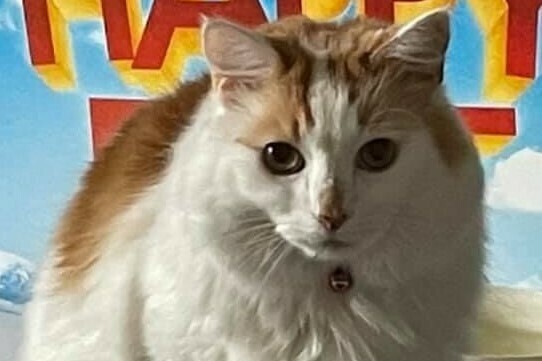
|
| |
Sonny's adventure - a reminder about LILY toxicity in cats!
|
|
| |
|
|
| |
Sonny is an adventurous local cat whose curiosity and taste buds almost got the better of him last month!
Sonny took it upon himself to have a chew on some LILY flowers that were in his family home. Unfortunately, all of the parts of the lily plant (leaves, stem, flower parts and even the pollen and the vase water) are highly toxic to cats, and can cause irreversible damage to the kidneys. If not caught and treated early enough, this toxicity can prove to be fatal.
Luckily, Sonny's diligent family were quick to pick up on what had happened, and got him to us straight away. After 3 days on a drip to flush his kidneys, his blood testing showed that Sonny had escaped any kidney damage, and was free to go home.
He sure is one very lucky kitty, and we are so glad that he is safe and well!
For more information on lily toxicity in cats, please click the button below for a useful infographic from a Sydney florist. |
|
| |
|
|
| |
Lily Toxicity Information Sheet
|
|
|
|
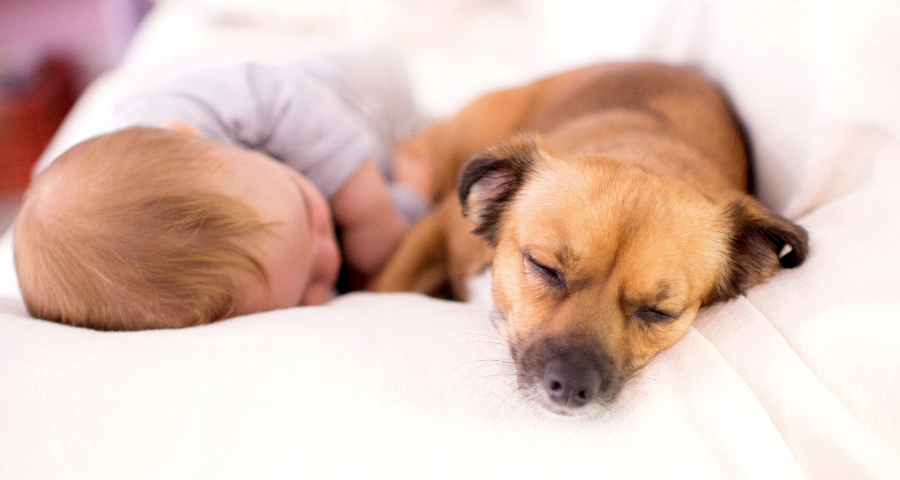
|
| |
Introducing babies and pets
|
|
| |
|
|
| |
The prospect of introducing your new human baby to your original furry family member is exciting, but can also be a little daunting. Here are some tips for easing the transition for your pet, and keeping bub safe!
Prepare your pet for your baby’s arrival
Several months in advance, book a consultation with us to ensure your pet is up-to-date with all preventative treatments (such as vaccinations, tick, flea and worming prevention). It can be easy to lose track of these things!
If your pet is boisterous or ever shows anxious or aggressive behaviours, we can also recommend a veterinary behaviourist to assist you in positively modifying your pet’s behaviour in advance of your little one’s arrival.
After birth
It’s a great idea to bring a blanket to the hospital that you can wrap bub in (to get their scent on) and then have someone take this to your home. Your pet should be allowed to sniff the blanket scent, whilst being offered gentle praise and treats to create positive associations.
When you’re bringing your baby home for the first time, it’s helpful to have a family member or partner available to cuddle the baby outside, whilst you go into the house to greet your pet (as your pet will likely be very excited to see you!) Once your pet has calmed down, they can be introduced to the baby. It’s best to clip a lead onto dogs, so they can be pulled away gently if they are being too boisterous, or showing very intense (potentially predatory) focus on the baby.
As long as your pet is behaving appropriately, try to offer them gentle praise or intermittent treats when the baby is around to create positive associations. You should never leave your pet and baby unsupervised together.
Careful management early on will help set your pet and child up for a beautiful relationship!
Please call us if you have any questions about introducing pets and children. |
|
|
|
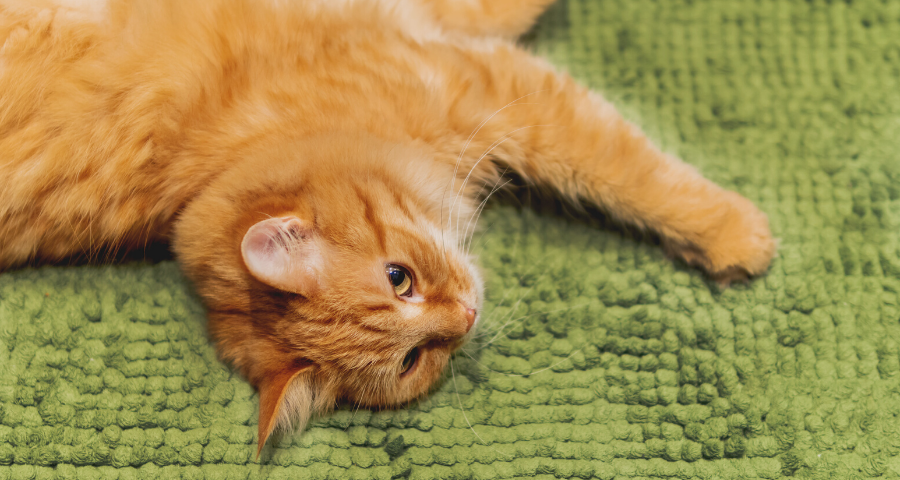
|
| |
Why is my pet vomiting?
|
|
| |
|
|
| |
Uh oh, your pet has vomited – what should you do?
The first thing to do is to clean it up, obviously! Not only is this good hygiene, but it prevents your pet eating their vomit, which is generally best avoided. Additionally, if you can stomach looking at what’s come up, it can be helpful to check your pet’s vomit for any unusual inclusions, such as toy pieces, worms or fresh blood.
There are many reasons why pets can vomit. Vets often categorise different causes of vomiting into gastrointestinal causes (i.e. problems with the gut itself), or extra-gastrointestinal causes (problems elsewhere in the body that can cause a pet to feel nauseous).
Common gastrointestinal causes of vomiting are:
- Infections - worms, salmonella or giardia
- Dietary 'indiscretion' - when your pet eats spoiled, toxic or unsuitable food
- Foreign bodies - non-food items that if eaten can cause gut blockage
- Food allergies or inflammatory bowel disease
- Gut tumours
- Car sickness
Extra-gastrointestinal causes of vomiting include diseases of other organs, which can cause nausea or affect gut health, such as:
- Pancreatitis (inflammation of the pancreas)
- Kidney disease
- Liver disease
- Hormonal imbalances e.g. Addison's disease or uncontrolled diabetes
- Brain or ear diseases, causing loss of balance and dizziness
If your pet does vomit, but seems otherwise well, it’s reasonable to monitor them for a while at home. However, if they seem lethargic, have vomited multiple times, have bloody vomit or profuse diarrhoea, then it is best to have them seen promptly by our veterinary team for some supportive treatment.
Depending on your pet’s symptoms, we may also suggest some further diagnostic testing to investigate why they’re vomiting. Vomiting really is unpleasant, so we’ll do our best to help your pet feel better (and keep down their food) as quickly as possible!
If your pet has vomited and you are unsure if they need veterinary attention, please do not hesitate to contact us! |
|
|
|
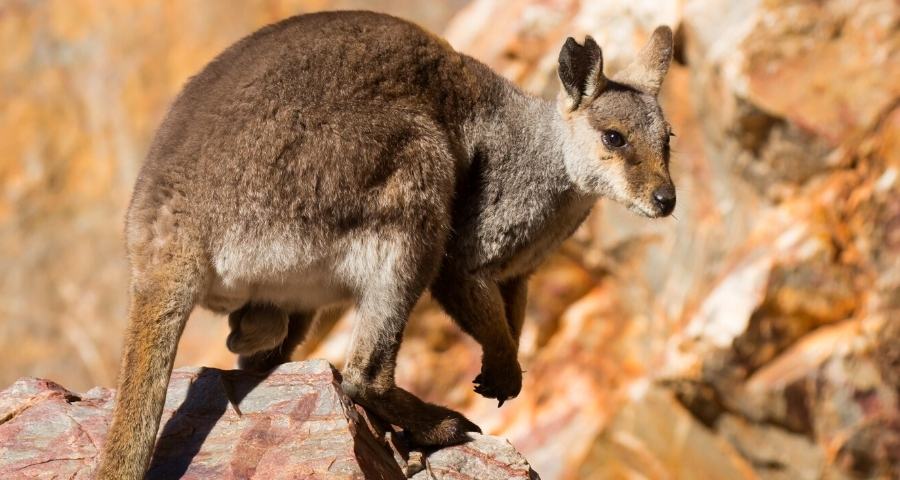
|
| |
Animal lovers urged to help save endangered native animals
|
|
| |
|
|
| |
Want to make a difference for our native animals too? With only one-quarter of known Australian threatened native species protected in conservation reserves, animal lovers in the community are being encouraged to support threatened species recovery programs in their local community. A recent episode of the podcast The Business of Biodiversity has highlighted how engaging the community in conservation efforts is essential to the survival of threatened native wildlife species.
As pet owners, we all know that we’re part of a massive community of passionate animal lovers, and this represents an opportunity for all pet owners to make a difference beyond caring for our own pets – by helping threatened native species in your local area.
This inspiring podcast features interviews with conservationists Darren Grover of the World Wildlife Fund and Jodi Rowley of the Australian Museum, who both talk about ways in which all of us can help threatened species – from contributing to citizen science projects to supporting the work of conservation groups.
Many of the wildlife species talked about are being impacted by a variety of threats, and if each of us in the animal-loving community were to participate in conservation efforts, it could help secure the survival of some of our beautiful and amazing native creatures.
Check out websites like this NSW Government page for information on how to help save our threatened species, or support the activities of conservation organisations like the Australian Wildlife Conservancy, who do fantastic work. |
|
|
|
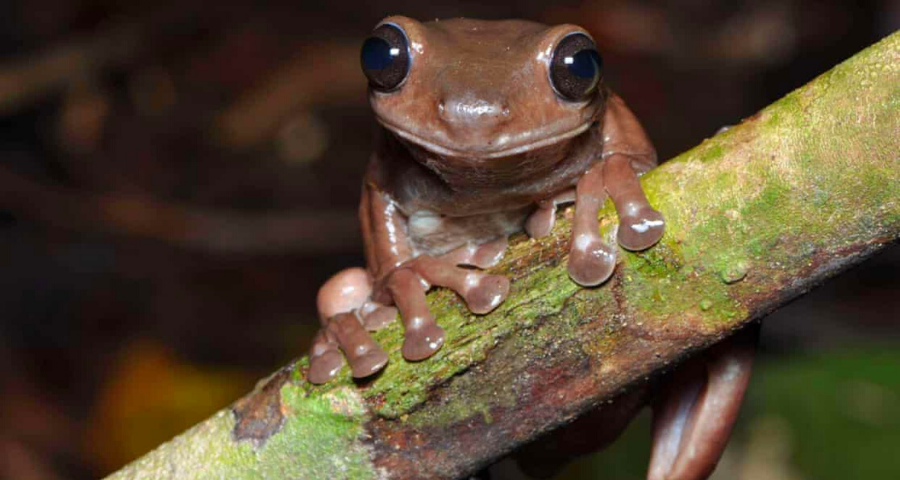
|
| |
Animal News In Brief
|
|
| |
|
|
| |
Litoria mira, the chocolate frog
Image source: The Guardian
Chocolate frogs - and not the Freddo kind!
Deep in the swampy rainforests of New Guinea lives a close cousin to Australia’s own green tree frog, except this one comes cocoa-coloured. In 2016, Australian scientist and frog specialist, Steve Richards, identified this new species of frog, named 'Litoria mira'. Despite being almost identical to the great Australian green tree frog, New Guinea’s chocolate frog is smaller in stature, growing to only 8cm big, and has brown glossy skin and patches of lavender behind the eyes. So surprised by the similarities between the two, Richards decided to tip his hat to the green tree frog when naming the new frog species. The latter term “mira” means surprised or strange in Latin, accompanying Litoria, the genus of Australasian tree frogs. As adorable as these sweet brown amphibians are, it’s unlikely that they could be found in Australia and co-habitate with their green cousins, as they need a lowland swampy rainforest environment to thrive in.
Read more about the new frog species here.
-----
Putting heartworm to the breath test
A team of veterinary and public health researchers have begun developing a test to detect heartworm in dogs, using the chemical 'fingerprint' in a dog’s breath. What is essentially a 'doggy-breathalyser' might just revolutionise heartworm testing, replacing the current tests that require blood tests. Heartworm prevention is one of the most critical parts of looking after your pet’s health. When an infected mosquito feeds on your pet, the heartworm larvae enter the bloodstream and mature into worms that can reach up to 30cm in length. These worms can then become lodged in your pet's heart, potentially leading to fatal heart failure unless they are caught early. That’s why the development of this 'breathalyser' could make detecting heartworm disease quicker and easier, helping to ensure no pet has to suffer this terrible affliction.
Read more about the heartworm breath test here.
-----
Don’t let your pet take the bait
Residents and workers across inland NSW and southern Queensland continue to face the total mayhem caused by the mammoth Australian mouse plague. In looking to eliminate the millions of vermin flooding the area, two main types of local rodent baits are being used: double-strength zinc phosphide coated wheat baits and anticoagulant baits. Although these baits are a practical solution for the mass scale of eradication necessary, they are equally poisonous to our pets and wildlife!
It’s important to remember that pets everywhere can be poisoned simply by finding rat bait accidentally, or through secondary poisoning, by eating mice who still have bait in their gut. Symptoms of poisoning in pets can range from obvious signs of blood loss (e.g. red urine, nose bleeding, prolonged bleeding from a wound) to “hidden” bleeding (which can occur within muscles, joints or body cavities), so monitoring your pet for symptoms of general weakness, a pale gum colour, breathing difficulties or unusual swelling of the belly is critical.
On the bright side, if caught early enough, rat bait toxicity can be treated with an antidote, and animals severely affected may be able to be treated with blood transfusions. But prevention trumps cure! So, in areas where bait is being set, never let your pet wander unsupervised. Do not let your pet touch unwell or dead wildlife, and ensure any bait is only placed in areas impossible for your pet to access. Read more about the effects of the mouse plague here.
If you suspect your pet has ingested bait, please call our team urgently for advice! |
|
|
|
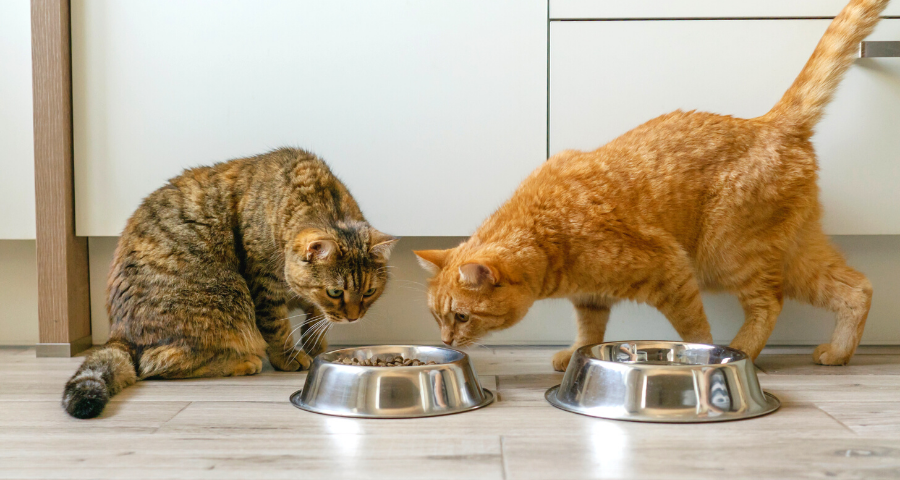
|
| |
“Sensitive stomach” = special diet?
|
|
| |
|
|
| |
Does your pet have a 'sensitive stomach? That is, do they intermittently show signs of vomiting and/or diarrhoea?
There are many potential causes of a sensitive stomach, ranging from food intolerances or allergies to inflammatory bowel disease. There are also other gut problems that can cause intermittent tummy upsets, such as chronic infections. Additionally, some diseases elsewhere in the body, such as kidney disease, can affect gut health.
Therefore, if your pet is showing regular signs of tummy upset, it’s best to consult us for advice. Pets showing weight loss, frequent or severe gut upset, or other symptoms of unwellness are best to have their symptoms investigated with diagnostic testing, as are very young animals. Testing may include analysis of faeces, blood and urine testing, and abdominal imaging such as x-rays or ultrasound. In some cases, we may require intestinal biopsies to get an answer.
In some pets, prescription veterinary diets can serve as both diagnosis and treatment, if we suspect a food-related issue. Prescription digestive health diets can include:
- Digestible diets - these diets help settle simple tummy upsets or animals with mild 'sensitive' stomachs, and generally work by providing nutritional sources that are easily digested, plus an altered fibre content to support healthy gut bacteria, and other gut-settling supplements or vitamins
- Low-fat digestible diets - in addition to the above benefits, these diets are particularly low in fat to benefit animals who suffer from pancreatic inflammation
- Hypoallergenic diets - these are designed for animals who are allergic to certain food proteins, and work by providing your animal with altered proteins or new types of protein that are less likely to trigger your animal’s gut inflammation
So, if your pet suffers from an upset stomach, book an appointment with us today – there are a range of recommendations we can offer to help! |
|
|
|
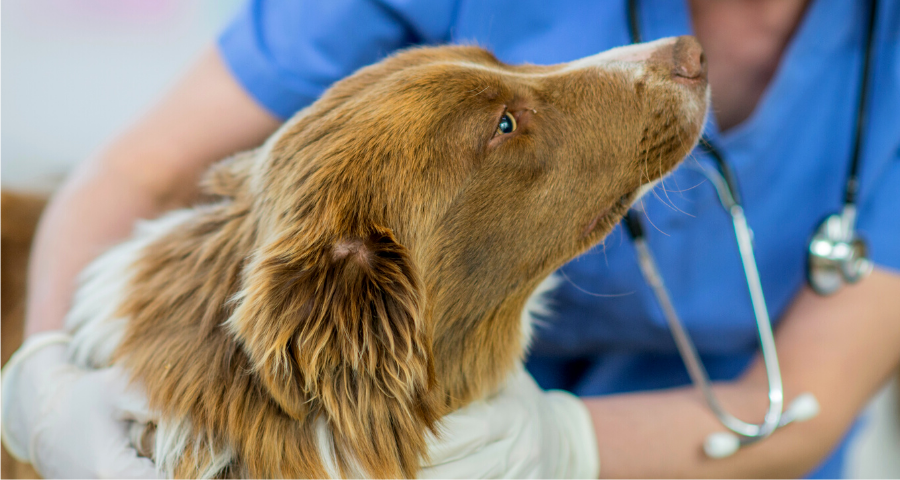
|
| |
Does my dog need a vet visit for diarrhoea?
|
|
| |
|
|
| |
If your dog suffers from diarrhoea, it can be distressing for both you and them, particularly if it’s severe or happens frequently. Animals with diarrhoea can be uncomfortable or have pain in their belly, become dehydrated and develop blood electrolyte imbalances that make them feel more unwell. If your pet’s diarrhoea contains significant amounts of blood, they can also become anaemic or go into cardiovascular shock (develop dangerously low blood pressure).
Common causes of diarrhoea in dogs include:
- Infections such as E. coli, giardia, roundworm, whipworm and parvovirus
- Toxins such as chocolate
- Eating spoiled food or large amounts of unsuitable food (e.g. very rich food)
- Food allergies or inflammatory bowel disease
- Pancreatitis (inflammation of the pancreas)
Dogs can also develop diarrhoea due to other significant diseases in the body affecting gut health, such as hormonal imbalances.
If your pet is suffering from a once-off bout of diarrhoea, it’s OK to monitor them for several hours, provided they seem otherwise OK, are still drinking and keeping down water, and are not passing blood.
However, if your pet is losing a lot of fluid, passing blood, seems lethargic or is otherwise unwell, it’s best for them to be assessed by our veterinary team as soon as possible. Dogs suffering these symptoms generally require supportive care such as intravenous fluids (a drip), pain relief, anti-diarrhoeal supplements and any appropriate direct treatments for the cause of the diarrhoea (e.g. worming medication if faecal testing indicates worms).
If your pet suffers regular bouts of diarrhoea, we may suggest further diagnostic testing, such as blood tests, faecal tests, abdominal imaging (e.g. abdominal ultrasound) or potentially a prescription digestive health dietary trial.
So, if your pet has abnormal poos, have a chat to our lovely team about whether a consultation is required. Let us help to solve a rather unpleasant problem! |
|
|
|
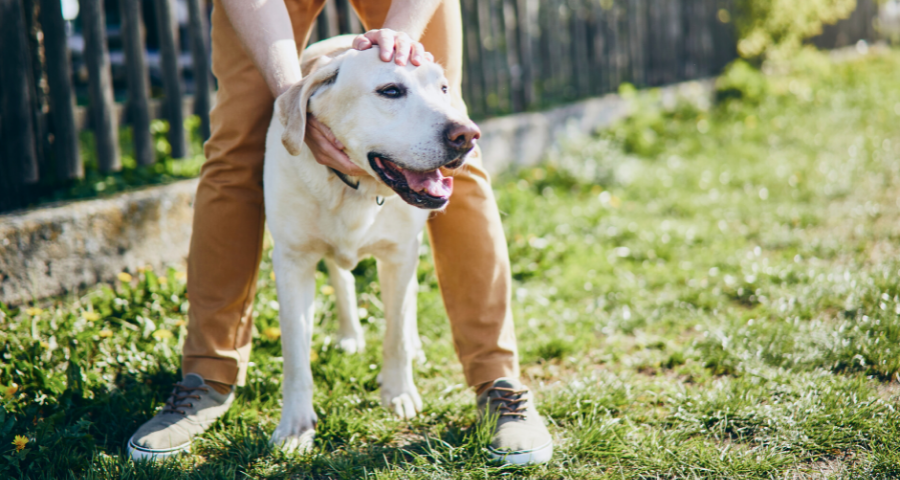
|
| |
Not all lumps can be lumped together!
|
|
| |
|
|
| |
Have you noticed a new lump on your pet? If so, it’s best to get this checked fairly promptly by our team, as some lumps require further treatment for your pet’s health and comfort.
What might my pet’s lump be?
A new lump on your pet could be:
- Inflammation e.g. an insect sting
- Infection e.g. a tooth root abscess
- A foreign body e.g. a grass seed migrating between the toes
- A cyst - a fluid-filled lump
- A tumour - these can be benign (i.e. non-cancerous) or malignant (cancerous, spreading around the body)
How can we tell what my pet’s lump is?
Sometimes we can look at a lump and get a good idea of what it might be, if it’s a mass type with a fairly classic, distinct appearance.
However, in most cases it’s best for us to do testing of the lump, to confirm what is actually causing it. This can involve:
- In-house testing - this is where we collect some material from the lump (either with a needle, or by smearing a glass slide onto it if the lump is moist), and look at the sample under the microscope
- Surgical biopsies - in some cases, we can only get a definitive answer by removing part or all of the lump (depending on how extensive it is), and sending it to the laboratory for testing
What treatment will be required?
Once we know what mass type your pet has, we can recommend appropriate treatment. Some lumps, such as cysts or benign tumours, may just require monitoring to ensure they don’t grow big enough to bother your pet.
Malignant cancers may require varying treatments, depending on what specific type they are – treatment options may involve surgery, referral to a specialist for chemotherapy or radiation therapy, or palliative care to keep your pet comfortable.
The best option for your pet (and your worry levels) is to get any lump checked promptly – we in-cyst! |
|
|
|
| |
This email contains comments of a general nature only and is not intended to be a substitute for professional veterinary advice. It should not be relied on as the basis for whether you do or don't do anything.
All content © Pet Pack 2020 |
|
|
|
[Footer]
|